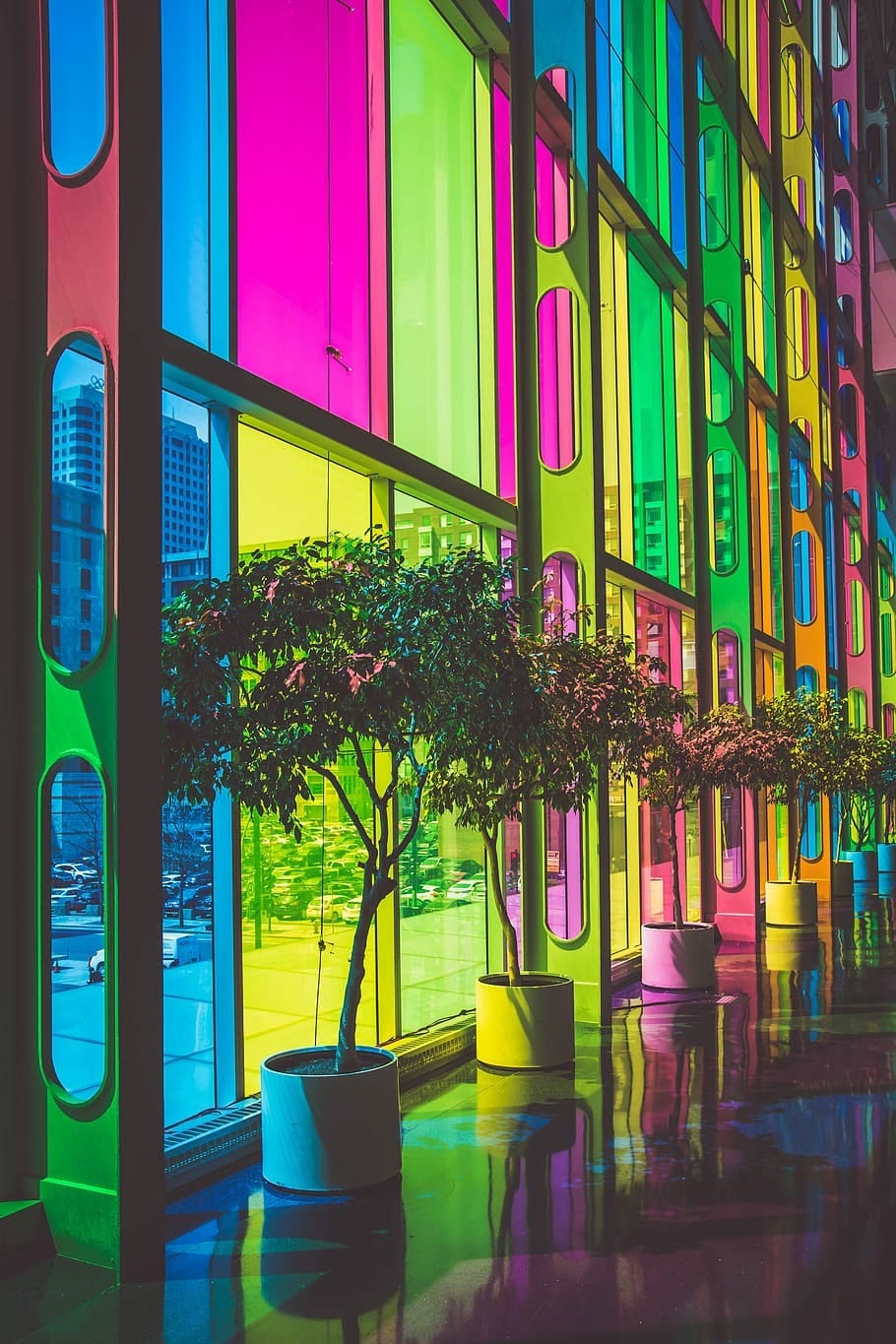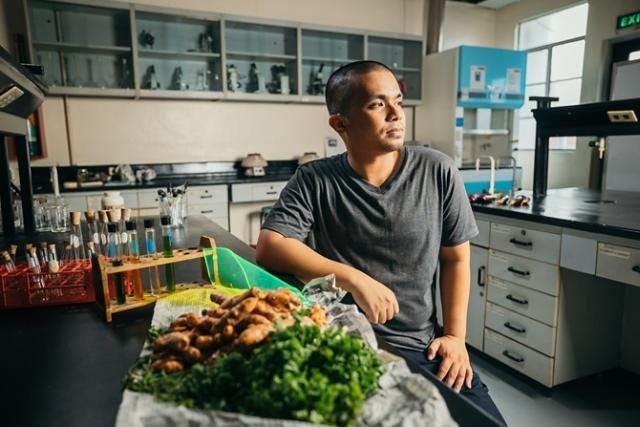Helloooo friends!
I ran into a little tech snafu last week making it impossible to send you this newsletter. But this week, we’re back! I’m thinking you’ll appreciate this inspired reporting from the brilliant Megan Otto.
On another note, in case any of you are itching to travel to Hawaii, here’s a piece I wrote for the SF Chronicle about Kauai’s commitment to regenerative travel on the North Shore.
Guest post by Megan Otto
New, green technology to power our world is often surprising when it appears. Unknowability can sometimes be a source of fear, but in cases like this, it can also be a source of hope. Our climate crisis is changing the once-predictable rhythm of our world, but this hasn’t changed humanity’s ability to adapt and problem-solve. We don’t yet know how we’ll conquer the climate crisis, and we also don’t know about all the solutions and tools we will have to fight it.
Image courtesy of James Dyson Foundation
As we study our modern climate, we’re constantly inventing paths to conserve land, to eliminate plastic, and to support green energy. For instance, as solar power has risen in popularity, we’ve imagined how we might effectively make solar power a prominent replacement for fossil fuels. Yet the technology isn’t perfect—the big black panels that we’re used to seeing need direct exposure to sunlight, and they take up a large amount of space. We've imagined putting them on the roofs of houses and over parking lots, but it’s difficult to place them effectively.
But at the end of 2020, Carvey Ehren Maigue imagined a new way: turning solar panel boards into flexible solar panel windows. And better yet, building these panels out of food waste.
Light from an unexpected source
Winner of the James Dyson Award in Sustainability, Maigue’s invention, called AuREUS, consists of resin solar panels that can be placed in windows and on walls. They capture UV light, so they can produce electricity when not facing the sun directly.
Because they can work vertically instead of horizontally, buildings could become “vertical solar farms.” All while upcycling crop waste, which becomes part of the material that makes up the panels and also happens to be what the panels use to capture energy and light.
“With AuREUS, we upcycle the crops of the farmers that were hit by natural disasters, such as typhoons, which also happen to be an effect of climate change,” said Maigue in an interview with Dyson. “By doing this, we can be both future-looking, and solve the problems that we are currently experiencing now.”
AuREUS seeks to protect the earth, and it also comes from the earth. In addition to using crop waste, AuREUS borrows its energy conversion process from a system that already exists in the natural world, namely in the Auroras, the Northern and Southern lights.
The Auroras absorb high energy particles into luminescent particles and then give off a colorful glow. Similarly, Maigue’s panels use certain fruits and vegetables that have luminescent particles. So when you take those particles, suspend them in resin, and put them in windows, the UV light is absorbed and then re-emitted as capturable, visible light. That light is then absorbed by cells along the edges of the panels and turned into electricity.
With these panels, hundreds of tiny Auroras can cover our offices, our schools, and our homes. Cities can become solar farms. We can take what grows from the earth, show it to the sky, and pull new light and energy from it. And we didn’t know we could until one person, Carvey Ehren Maigue, invented it.
Image courtesy of James Dyson Foundation
Follow the yellow brick road
It’s said that solving a problem is like traveling down a road that narrows as it goes. A highway turns into a four-lane road, which turns into a two-lane road, which turns into a one-lane road that’ll lead you home. Your thinking grows more specific as you near your solution.
We can’t see all the way to the end of the road from where we are currently. We have to keep traveling and follow the signs as they appear. One road leads to another, and we don't quite know what those roads look like until we’re on them. We just have to work together to keep the car moving and take it one step at a time.
While not all of us will create life-changing inventions, I do believe that our engagement with those inventions, when they cross our path, can make a huge difference. Noticing and uplifting solutions can have a big effect on the way we view the climate crisis and the paths we choose to go down.
Celebrating advances in science and leaders solving problems in their communities can highlight the tools we have available to us, and this in turn can create the momentum needed for a solution to take effect. Only 3.5% of a population is needed to participate in a protest to enact change, so our voices—when we call for green energy and land conservation and carbon sequestration—really are heard.
Maigue has even more ideas for future solar technology: “I want to create threads and fabric so that even your clothes would be able to harvest ultraviolet light and convert it into electricity,” he said to Dyson. “We are also looking to create curved plates, for use on electric cars, aeroplanes and even boats.” Perhaps now that he’s received attention and praise with his Dyson award, Maigue will have the support he needs to do so.
The power of humanity to invent and adapt is perennial, and if we can continue to keep an eye out for solutions that aren’t yet mainstream, we can choose to take advantage of them and propel them forward.
Keep listening, keep sharing, and build a network of solutions. It’ll cascade outward like a ripple in the water.
This week’s action:
Seek out and share at least one solutions-oriented climate story. Share a piece of good news that you read, or some information about our climate that you found interesting or inspiring, or celebrate something good that’s happened in your community. (The Solutions Journalism Network is a great place to keep track of solutions stories.) Then tag us so we can see! We’ll celebrate and share it alongside you.
Hopefully, as we continue and expand the conversation about climate solutions, we can invite those around us to imagine a brighter path forward.
Some of your climate actions in the past couple weeks:
Here are just a few of your acts of good I noticed this week:
My aunt, Debbie Kapson, used her neighborhood text chain to collect diapers to donate to a local shelter.
Sarah-Hope Parmeter created this list of postcarding activities to get US legislators to pay attention to what matters to her.
Ana Paola Teeple is helping use fire to protect trees in her community from sudden oak death—and the work she’s doing helps control wildfires.
Ally Pecego is lobbying her California legislators to address plastic pollution.
A principal in my neighborhood asked people on Next Door to help one of the families in his school who had been experiencing homelessness and just found a place to live. 189 people responded offering everything from furniture to clothes, food and gift cards.
Looking forward to hearing more of YOUR amazing climate actions!





